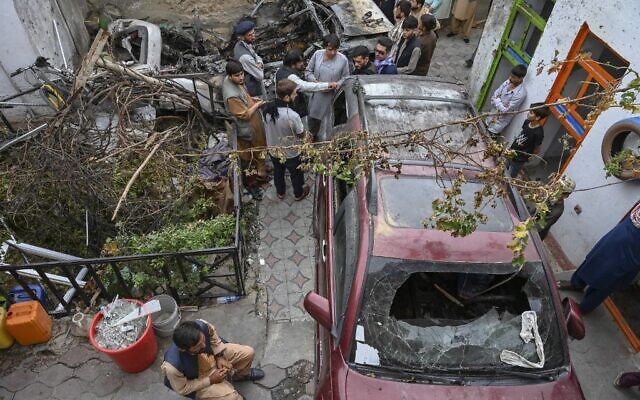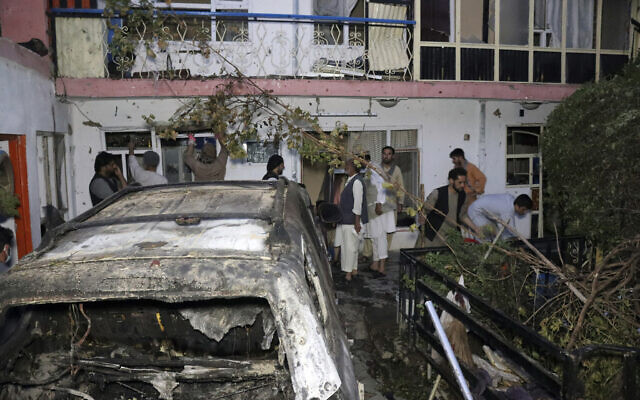According to reports, 10 members of one family died when a US drone strike Sunday targeted Islamic State terrorists

A drone strike in Kabul on Sunday that the US said targeted terrorists about to carry out an attack killed 10 members of one family, including seven children, according to media reports.
US officials said Sunday’s drone strike hit a vehicle carrying multiple Islamic State suicide bombers, causing secondary explosions that indicated the presence of a substantial amount of explosive material. A senior US official said the military drone fired a Hellfire missile at a vehicle in a compound between two buildings, after people were seen loading explosives into the trunk.
According to The New York Times, 10 members of one family were killed, including an aid worker for the American charity organization, Nutrition and Education International, and a contractor with the US military. CNN reported that nine members of a family, including six children, were killed in the air strike.
In a statement, US Central Command said it was looking into the reports of civilian casualties that may have been caused by the secondary explosions. An Afghan official said three children were killed in the strike. The officials spoke on the condition of anonymity to discuss military operations.
“We are aware of reports of civilian casualties following our strike on a vehicle in Kabul today,” Captain Bill Urban, a CENTCOM spokesman, said in a statement. “We are still assessing the results of this strike, which we know disrupted an imminent ISIS-K threat to the airport,” he continued.
“We know that there were substantial and powerful subsequent explosions resulting from the destruction of the vehicle, indicating a large amount of explosive material inside that may have caused additional casualties,” Urban added. “It is unclear what may have happened, and we are investigating further. We would be deeply saddened by any potential loss of innocent life.”

The strike on Sunday, and a separate strike on Saturday against IS, came in the wake of the deadly suicide bombing at the Kabul airport on Thursday which killed 13 US service members and close to 170 Afghan civilians. IS claimed responsibility for the suicide bombing, which came as scores of Afghans were fleeing the country after the Taliban’s stunning and rapid takeover of Afghanistan as US forces withdraw.
The Islamic State-Khorasan group also claimed responsibility for a rocket attack on Monday which targeted the Kabul airport but struck a nearby neighborhood.
“The soldiers of the caliphate targeted Kabul’s international airport with six… rockets,” the group said in a statement.
Some of the rockets landed in the Salim Karwan neighborhood, striking residential apartment blocks, witnesses said. That neighborhood is some three kilometers (less than two miles) from the airport. There were no immediate reports of injuries.
Five rockets targeted the airport, said Navy Capt. Bill Urban, a spokesman for the US military’s Central Command. A defensive weapon known by the acronym C-RAM — a Counter-Rocket, Artillery and Mortar System — targeted the rockets in a whirling hail of ammunition, Urban said. The system has a distinct, drill-like sound that echoed through the city at the time of the attack.
The rockets did not halt the steady stream of US military C-17 cargo jets taking off and landing at the airport.
US President Joe Biden has set a deadline of Tuesday to withdraw all US forces from Afghanistan, drawing to a close his nation’s longest military conflict, which began in retaliation for the September 11, 2001 attacks. The Islamic State-Khorasan group, rivals of the Taliban, pose the biggest threat to the withdrawal.
As reported by The Times of Israel
